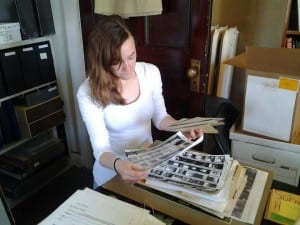Internships, Part 3: The Intern
By Kate Smith

We have spent the last two weeks focusing on internships from the perspectives of the host site and the college supervisor. Now, we’ll examine internships through the eyes of the student intern. What makes an internship appeal to them? What do student interns hope to get out of time spent at a host site? I chatted with Alyssa Arciello about her experiences as an intern at sites in Stark County. Here is what she had to share:
What kind of internships do you look for/set up?
While in school, I searched for internships that were going to expand my experience and knowledge base. Diverse internships allow students to work on a variety of projects that allow them to gain a wide skill set. So I enjoyed internships that helped me learn a new skill or hone a skill I hadn’t fully developed. Internships are about developing as a professional and becoming more marketable to potential employers.
What do students hope to get out of their internships?
Students hope that they not only get the experience and skills needed for jobs in the profession, but also a better understanding of the profession as a whole. Internships are the best way for students to learn.
Why are internships so important?
First, they provide students with the opportunity to gain first-hand experience in their particular field. Internships are a good way to augment the theoretical aspects of a profession while being guided by a professional. Specific experience is crucial for anyone who is looking for a job, and internships are a good way for students to gain this experience while working on their degree. Creating a network in the field is also important.
Can you give an example of a good internship?
I really enjoyed my curating internship at the Massillon Museum for several reasons. This internship gave me insight into how a museum is run and how all the departments work together. It allowed me to work on several areas within the profession, such as exhibit design, registrar, archives, education and event planning. One aspect that I particularly liked was that even though I was an intern, my input was valued and encouraged just as I was on staff. I also was able to make connections with the staff members that have helped me as I progressed with my education and career.
What is the ideal structure for an internship?
The ideal structure for an internship is one that will allow the student to gain the most experience. Various projects should be assigned to the student to allow the intern to demonstrate and expand their skill set. The internship should be overseen by an on-site supervisor who can help coordinate projects and goals of the internship. The supervisor should act as a mentor to and train the intern and provide feedback, both during and after the completion of the internship.
See also: Internships, Part 1: the Host Site; and Internships, Part 2: the College Supervisor
Kate Smith is a Region 5 representative of the Ohio Local History Alliance and Special Projects Coordinator at the Dennison Railroad Depot Museum in Dennison, Ohio.
